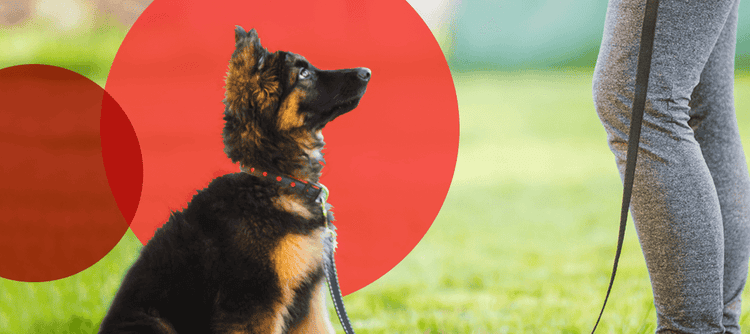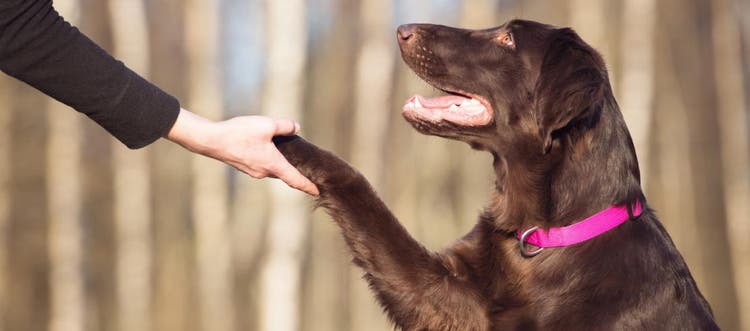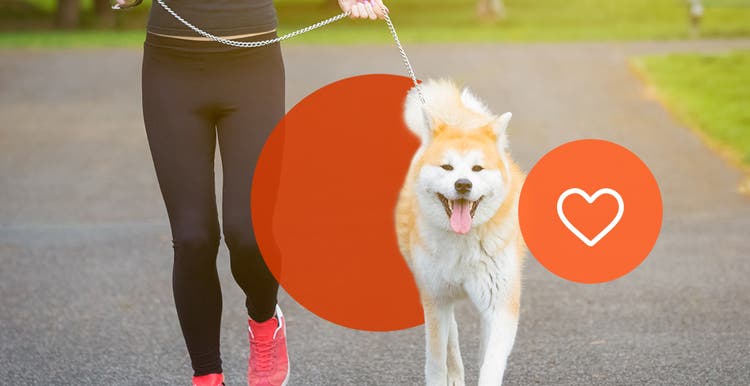How to train your new rescue dog
Adopting a rescue dog is a great way to welcome a new best friend into your happy, loving home. There are a lot of options to consider when looking for a rescue dog, whether searching online (like Adopt a Pet) or at your local shelters. No matter how a rescue dog finds their forever home, they may need time to adjust and learn the norm. Because every rescue dog has a unique story and background, some may have unique behavioral quirks that deserve special attention. We have you covered with five tips to consider when training your new rescue pet.
Tips for Training a Rescue Dog
1. Adopting a Rescue Dog: The First Seven Days of Adjustment
A new home is a huge change for a dog, and any bad past experiences might make new environments, people or routines especially stressful for your pet. Plan on giving your dog some time to get familiar with their new home and family. That might take anywhere from a few hours to several months. New owners should prepare for (at least) a full seven days of acclimating your dog to new people and places.
Establishing a routine can help a dog adjust, so keep their food in the same spot, introduce them to new walk routes slowly and monitor them closely as they meet new friends or family members. Avoid overstimulating them if possible and try to stay understanding and calm throughout the integration period.
2. Prioritizing How to Train a Rescue Dog
Teaching your dog how to roll over on command is adorable, but it might not be practical in comparison to potty training. Your new rescue dog may already know some basic commands but could forget them when transitioning to a new environment. It’s best to assume you’re starting from scratch when you take your dog home. Make a list of the essential things your dog needs to learn so you’ll both be prepared for training time. That could include:
- Crate training: For some dogs, crates can be a safe haven. For others, crates may trigger anxiety. Your rescue dog may already like or dislike crates based on their past experiences. Gradually introducing the crate and pairing it with something highly desirable (for example, tossing treats into an open crate) is a great way to see how your new dog responds to a crate. For dogs that are comfortable or neutral with crates, they can help keep a dog safe and secure, and can be used to help with house-training.
- House training: Teaching your dog when and where to go to the bathroom is a must for any pet owner. Older dogs that have spent some of their life in a kennel or outside often have difficulties with housebreaking, but they also have better bladder control and attention spans.
- Basic commands: “Sit,” “stay,” “heel,” “down” and “come” are essential commands your dog should know for the sake of your household and their safety. Most dogs can be readily trained to respond to these commands with positive reinforcement training.
- Leash training: Leash training a rescue dog will open a world of possibilities in where you can take your new furry companion. Dogs need regular exercise, and daily walks can help your dog burn off some energy. If you’re a runner, you might even want to train your dog to run with you. If your dog is healthy enough and the conditions are right, running can be a beneficial habit for both owner and pup!
- Destructive behavior: Dogs might chew your favorite shoes or furniture out of boredom, anxiety, hunger or a need for attention. Chewing in dogs is natural, but training and exercise can help them burn off energy and make them more receptive to commands.
- Socialization and bonding: To create a positive association, gradually and carefully expose your pet to new people and pets while also rewarding them with praise and yummy treats. This should be done with careful supervision. If your dog acts skittish or wary, switch up their exposure level so they can remain relaxed or comfortable. Ultimately, bonding with new people and pets is an important skill for dogs to have, even if it takes months or years.
If your dog is nailing the other routines, try something new and fun for additional enrichment. Did you know you can teach your dog to take a bow? New skills for your dog might be your future go-to party trick.
3. Starting Obedience Classes
Combining an obedience class with practice at home is a great way to make sure your dog stays on track. Classes with a trained professional can equip owners with needed information and insight, and in some cases, personalized tips for their pet. Obedience classes are also a great way for dogs to get socialized, no matter what age they are.
If you’re wondering how to find the best class for your dog, your shelter may have recommendations. If they don’t, ask a trusted friend or vet. Look for qualified instructors certified by The Certification Council for Professional Dog Trainers® (CCPDT®), the leading independent certifying organization for the dog-training profession. If possible, indoor classes are best since they minimize distractions.
4. Setting Consistent Routines
Consistency is key to helping your dog learn and retain desirable behaviors. These tips can keep you on track:
- Set your dog up for success with management strategies that will reduce the likelihood of undesirable behaviors and increase the likelihood of desirable ones. For example, is your new dog a counter surfer? Don’t leave food out on the counter and/or restrict your dog’s access to the kitchen. Have you adopted a barker? Keep the blinds shut so they can’t see passing pedestrians.
- Rewards and praise should follow directly after good behavior.
- Set aside 10 to 15 minutes for training at regular intervals throughout the day, preferably when their energy is lower and they are more relaxed.
- It’s no secret that dogs are cute, but don’t let that cuteness prevent you from being consistent with your guidance!
- While rules are important when training your dog at home, try not to get so wrapped up in rules that you forget to enjoy the time with your furry friend. You can still make things fun while staying effective.
5. Practicing Patience
Change doesn’t happen overnight, and some behaviors in dogs are simply part of their nature. Patience is a big virtue in guiding your dog, and weeks of persistence, repetition and consistency can work wonders. Keep in mind: Any attention — good or bad — is still attention. If your dog continues bad behavior (such as jumping on people or barking for attention), hold strong in ignoring their attempts to catch your eye. Practice patience with your dog — and with yourself as a new owner. You both might slip up sometimes, but the bonds you’ll form together while working through training will be well worth the effort.
Final Advice on Training a Rescue Dog
Some potential owners may worry that an older rescue dog will most certainly have behavioral issues, but that assumption overlooks the many dogs that would make wonderful pets. Adult dogs may be a better lifestyle fit, depending on your schedule or family dynamic. Unlike puppies, older dogs will be more mature and less distractable. Contrary to the saying “You can’t teach old dogs new tricks,” plenty of rescue dogs are ready to learn and to love their new family.










